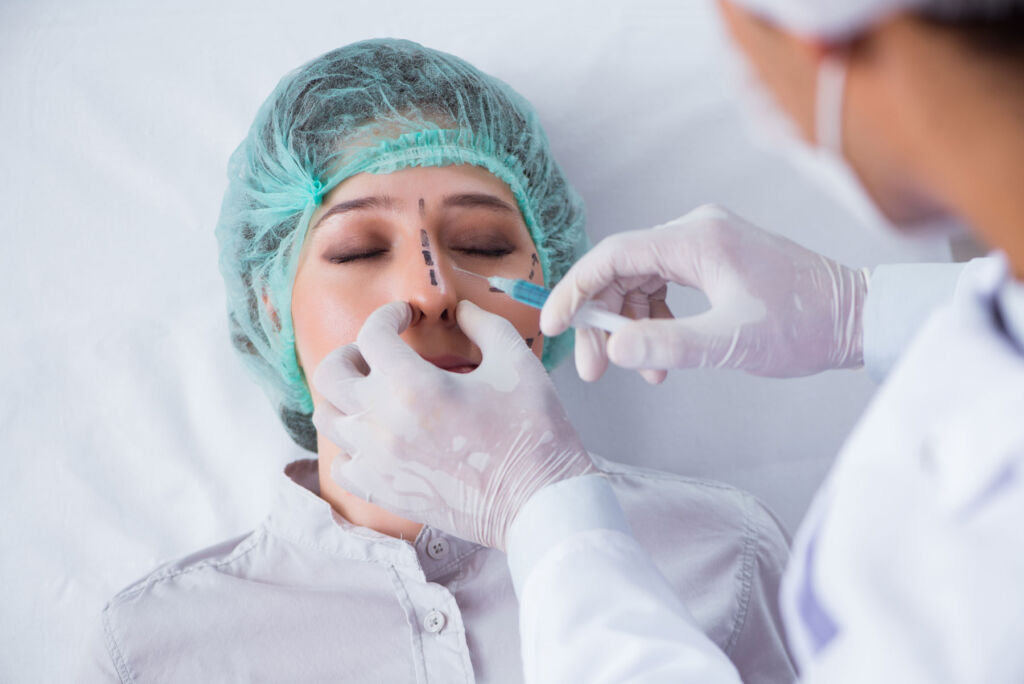
With reverse nose jobs trending in the beauty world, Dr Gytis Baranauskas, an otorhinolaryngologist-rhinoplasty surgeon at Nordesthetics Clinic in Lithuania, explains why the return to the pre-surgery nose is nearly impossible and why what has been done is probably better left alone.
Fluctuating beauty trends prompts people to go under the knife to achieve their ideal desired aesthetic. Although rhinoplasty (a nose job) is one of the most frequent facial plastic surgeries, with over 800K surgeries performed worldwide in 2019, studies show that rhinoplasty patients are more satisfied with improved function than aesthetic results.
One of the current trends concerns those who have undergone rhinoplasty purely for aesthetic reasons. Some are now choosing to get reverse nose jobs, wanting to return to their natural noses, which reflect their national identity or family heritage.
 The problem with reverse rhinoplasty is that it doesn’t come without risk to one’s health. Dr Gytis Baranauskas (right), an otorhinolaryngologist-rhinoplasty surgeon at the Nordesthetics Clinic, told us that restoring the nose to its original shape is almost impossible.
The problem with reverse rhinoplasty is that it doesn’t come without risk to one’s health. Dr Gytis Baranauskas (right), an otorhinolaryngologist-rhinoplasty surgeon at the Nordesthetics Clinic, told us that restoring the nose to its original shape is almost impossible.
The reason is that following rhinoplasty, scar tissue forms, and the structure of soft tissues and nasal skeleton change, making some of the changes irreversible.
Dr Baranauskas said, “In certain cases, a surgeon can restore the essential features of the former nose. However, revision rhinoplasty is usually more complex, and the result is less predictable; therefore, it is recommended to undergo surgery only if it is urgent.”
“Secondary rhinoplasty also takes longer due to complicated structural division and scar tissue. This might increase anaesthesia-related risks. If additional tissue is needed, the surgeon will take it from costal cartilages, auricle, or temporal fascia, so there is also a potential risk of sustaining complications in the donor spot.”

The ideal candidate for rhinoplasty
Although the look of the nose is important, a nose job purely for aesthetic reasons needs in-depth consideration, and the patient’s expectations need to be managed, Dr Baranauskas explained.
“For example, when the nose is crooked but does not cause breathing problems, the end goal is clear: a straight nose. However, caution is advisable if someone wants a different, “prettier” nose. Even if surgery achieves the desired cosmetic results, the person might still have difficulties adjusting to their new look.”
According to Dr Baranauskas, the ideal case for rhinoplasty is when both the function and the aesthetical look can be corrected with surgery.
“Take a person who has a crooked nasal septum resulting from the growth spurt of the septal cartilage. This will obstruct the airway and deforms the nasal axis by pushing the tip of the nose downwards and creating a hump. In cases like this, surgery can eliminate breathing problems while allowing the shape and position of the tip of the nose to change, removing the hump. It will result in an aesthetical transformation and, more importantly, unobstructed breathing.”

Pre-surgery do’s and don’ts.
If a person has chronic sinusitis, allergic rhinitis, sleep apnoea, or other chronic illnesses, Dr Baranauskas advises them to book consultations and medical examinations with Ear, Nose and Throat (ENT) doctors, allergologists, neurologists, and other specialists.
The person should inform their rhinoplasty surgeon about any medication they use, particularly drugs that affect blood coagulation, hormonal contraception, narcotic substances, and decongestants. They should also disclose their smoking habits, past injuries, surgeries, etc.
At the same time, Dr Baranauskas advises people who want to undergo rhinoplasty for aesthetic reasons to postpone the surgery before major life changes. For example, weddings, extended trips, new jobs, or after emotionally draining events like divorce, illnesses, loss, untreated depression, and other similar circumstances. He recommends this because the patient might have difficulties accepting the changed aesthetic look post rhinoplasty surgery.
Read more beauty and health news and features here.
![]()




You must be logged in to post a comment.